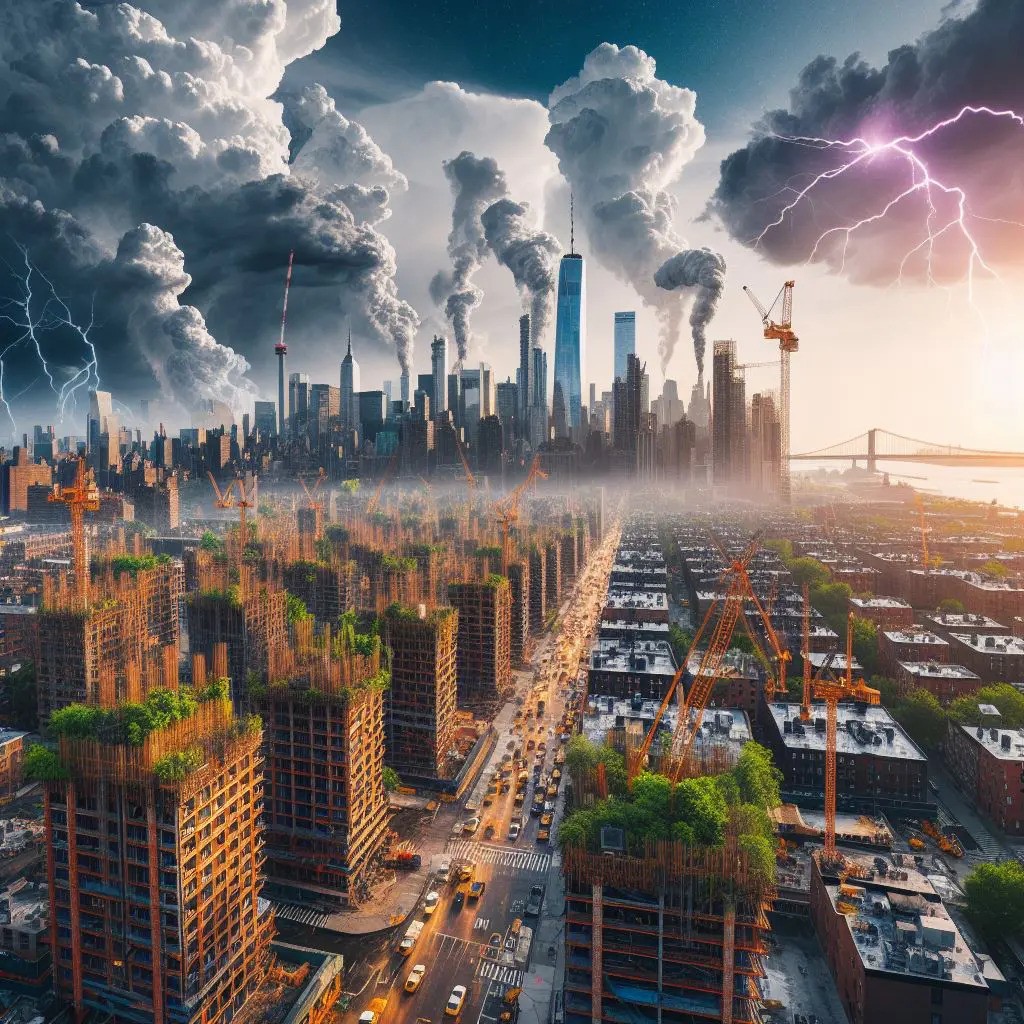Is Your Building Compliant? A Look at NYC’s Local Law Energy Standards

Introduction
New York City’s skyline is an iconic patchwork of architectural innovation, but it’s not just aesthetics that set these buildings apart. The bustling metropolis is also a leader in setting stringent environmental standards for its structures. It was in this spirit that NYC’s Local Law Energy Standards were introduced, placing the city at the forefront of the global fight against climate change.
For building owners and managers, understanding and complying with these standards is not just about avoiding fines—it’s about leadership in sustainability and proactive participation in the global movement towards energy conservation. This blog post aims to dissect the complex energy compliance landscape of NYC, offering insight into the significance of these laws and practical guidance for achieving compliance.
Understanding the Concept of Energy Compliance
At its core, energy compliance in NYC is about ensuring that buildings meet specific benchmarks for energy efficiency and environmental impact. These benchmarks aren’t arbitrary; they’re grounded in the urgent reality of climate change and the city’s commitment to reducing its carbon footprint.
Energy compliance serves as a cornerstone for promoting environmental sustainability by urging buildings to minimize waste, utilize resources efficiently, and adopt cleaner energy sources. Additionally, this initiative underlines the intrinsic link between a building’s energy use and its operational performance. Energy-efficient buildings tend to have lower operating costs and improved comfort for occupants, further incentivizing owners to meet and exceed compliance standards.
Overview of NYC’s Local Laws Related to Energy Compliance
When we delve into the specifics of NYC’s energy compliance framework, three laws emerge as critical pillars: Local Law 84 (LL84), Local Law 87 (LL87), and Local Law 97 (LL97).
Local Law 84 ushered in a new era of transparency by requiring owners of buildings greater than 25,000 square feet to submit annual reports on their energy and water consumption through the process. This public disclosure pushes building owners to be more conscious of their consumption patterns and to consider measures to improve efficiency.
Local Law 87 complements LL84 by requiring covered buildings to undergo periodic energy audits and retro-commissioning. These processes help identify not just current inefficiencies but also opportunities for future improvements to building systems, ensuring they operate optimally and in line with the latest standards.
Perhaps the most ambitious of the trio is Local Law 97. This legislation sets forth carbon emission limits for buildings larger than 25,000 square feet, essentially placing a “carbon cap” on large portions of the city’s built environment. Penalties for exceeding these limits are substantial, emphasizing the importance of proactive energy management.
Importance of Compliance with Local Law Energy Standards
The gravity of non-compliance with the Local Law Energy Standards can’t be understated. Environmentally, each building that fails to meet the standards continues to contribute excessively to NYC’s carbon emissions, undermining efforts to mitigate the urban heat island effect and global climate change.
Financially, non-compliance is costly. Fines for non-compliance with LL97, for instance, can be astronomical. In contrast, buildings that adhere to the standards often experience a significant reduction in operational costs due to decreased energy consumption.
Lastly, the impact on public health and well-being is pivotal. Energy-efficient buildings contribute to cleaner air and less pollution, fostering a healthier environment for New Yorkers. As buildings become more efficient and sustainable, the cumulative effect is a cleaner, more livable city for future generations.
Steps to Ensure Your Building is Compliant with NYC’s Energy Laws
Achieving compliance is a multi-step process that begins with understanding which laws apply to your property. From there, building owners should:
- Schedule professionals to conduct thorough energy audits as per LL87. These audits identify areas where energy performance can be improved.
- Undertake retro-commissioning to refine and upgrade existing building systems, enhancing their efficiency and longevity.
- Stay atop of regular reporting requirements, such as the annual benchmarking mandated by LL84, to maintain transparency and track progress.
- Following the energy audit, implement the recommended Energy Conservation Measures (ECMs) to ensure your building does not exceed the emission limits set by LL97.
Engaging with qualified energy services companies (ESCOs) or consultants can significantly streamline the compliance process, ensuring accurate reporting and effective implementation of ECMs.

Future Energy Standards and Regulations in NYC
Looking ahead, NYC is expected to continue tightening its energy standards, with increased stringency in emission caps and the introduction of new technologies and requirements. Building owners and managers should stay abreast of these changes by regularly consulting NYC’s Building Codes and Sustainability Codes. Anticipating and preparing for these changes can help in aligning with future regulations while reaping the benefits of being early adopters.
Conclusion
In conclusion, NYC’s Local Law Energy Standards represent a critical juncture in the city’s environmental policy. As New York continues its journey toward a more sustainable future, building owners and managers must recognize their pivotal role in this transition. By embracing energy compliance, they not only contribute to the city’s environmental goals but also invest in the efficiency and performance of their properties. Let the message be clear: compliance with energy standards is not only a legal necessity—it’s a fundamental responsibility towards building a resilient and sustainable New York City.









